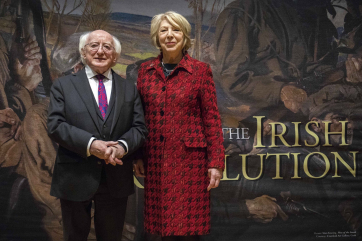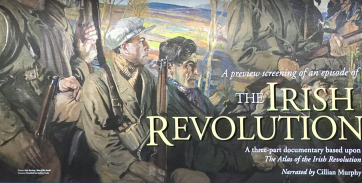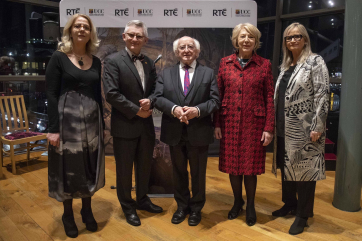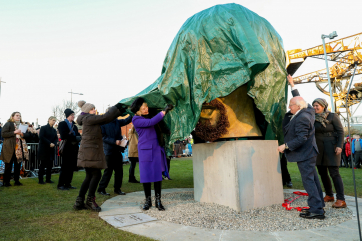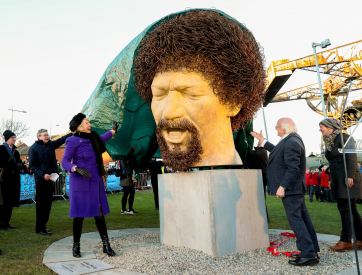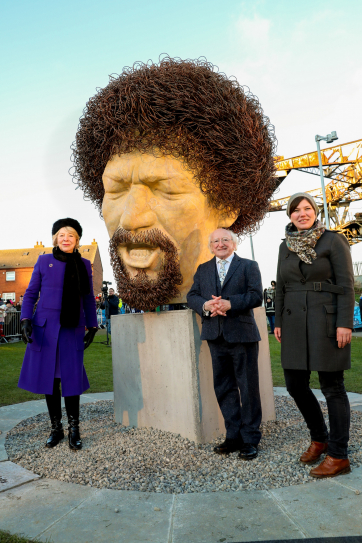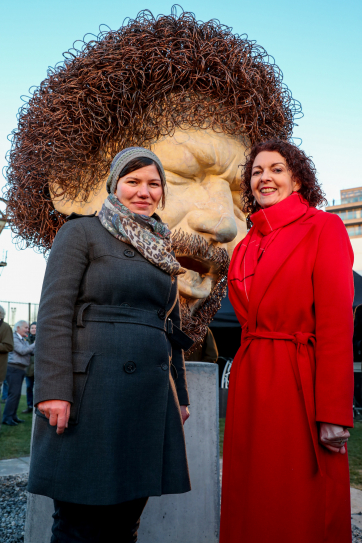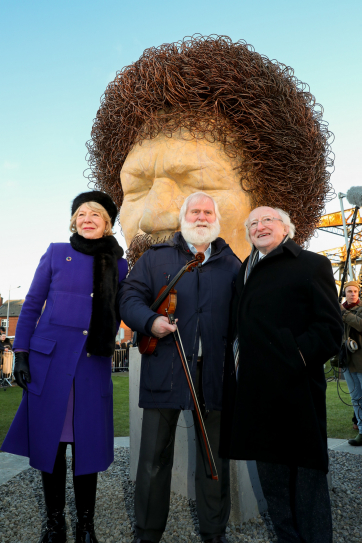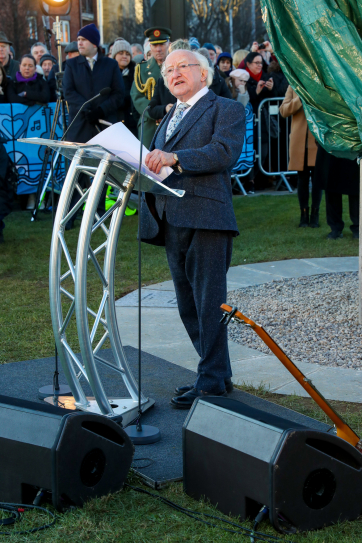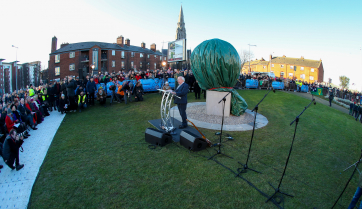Speech at the Unveiling of Statue of Luke Kelly
30 January 2019, South King Street, Dublin
Tugann sé an áthas dom a bheith anseo inniu chun an dealbh seo de Luke Kelly a nochtadh, ealaíontóir a d'fhág rian ar cheoil na hÉireann, agus ar thraidisiún na hamhránaíochta, agus go háirithe ar thraidisiún amhrán na ndaoine a bhí cos ar bolg agus iad siúd a bhí ag iarraidh saoirse.
[It is a great pleasure to be here today for the unveiling of this statue which is dedicated to Luke Kelly, an artist who has left a profound footprint on Ireland’s musical landscape, and on the tradition of song, and in particular that emancipatory tradition of the song of the oppressed and of those who would be free.]
Luke Kelly died exactly thirty-five years ago today, leaving behind a rich legacy of life and song that has continued to influence a new generation of Irish musicians. Urged by his example, they in turn continue to seek and deepen the connection in song, and with artistic excellence to the struggles of our times.
Luke’s music was, of course, deeply influenced itself by the community and the working-class Dublin in which he grew up – a Dublin where children were ‘reared on songs and stories’, and music was an intrinsic part of daily life.
The Kelly families of today are continuing that unique contribution, sharing their talents, their excellence of performance with us all, and doing so with a generosity that is the mark of the Kelly family.
The beat and rhythm of a disappearing Dublin that shaped and inspired the iconic versions of reworked songs which Luke Kelly and The Dubliners ultimately made their own, Luke’s passion for engagement with the lives being lived by those made marginal be it through emigrations and the building sites or those excluded on the bases of their colour was also a critical element. He was an internationalist and a proud socialist.
Luke had a unique ability to reimagine and reinterpret the traditional music which was experiencing a revival, and which is identified so strongly with our culture and heritage, as part of themselves expressed at home and abroad. He enriched it with his distinctive and unforgettable voice and the passion which permeated everything he did.
Luke’s role was such a pivotal one, not only in the regeneration and invigoration of Irish traditional music but in its sharing with the public and thus inspiring a new generation to embrace this important element of our rich culture and heritage.
It is in no small way due to the talent of Luke Kelly and The Dubliners that a renewed interest in our traditional Irish ballads occurred during the 1960s and 1970s amongst a younger generation of Irish people, an interest that continues to gain strength and wider audiences today.
Luke Kelly once described himself as ‘a sort of beatnik’ and it is certainly true that there was an authenticity to the connection he made between the life, the words, and the music. His many life experiences were brought to bear on the work he created, and Luke never failed to seek and convey the human stories behind the songs he and The Dubliners immortalised, songs and renditions that have become deeply woven into the musical history of our nation. As Damien Dempsey once remarked: “He really cared for the people he sang about”. He had respect for the source of the song and the music.
Today is an important day in the public cultural life of Ireland. The unveiling of his image as part of the public art of Dublin and the nation is a public recognition and an affirmation of the great admiration and affection with which Luke Kelly continues to be held, across the country but most especially here in his native Dublin, and those from abroad who will be familiar with Luke and The Dubliners can re-engage by visiting his statues.
I was one of those fortunate to know Luke personally. Sabina knew him long before me. We shared having partners that were associated with the Focus Theatre, - its founder Deirdre O’Connell in Luke’s case and Sabina Coyne in mine – The Focus to which Luke was so loyal and so generous.
Dóibh siúd againn a raibh aithne againn ar Luke, cuimhnímid air, ní hamháin mar cheoltóir cumasach agus nuálaíoch ach freisin mar fhear fhial le coinsias shóisialta, coinsias a shíneadh i bhfad níos faide ná an tír seo nuair a throid Luke ar son cearta na saoránach i dtíortha i gcéin.
[For those of us who knew Luke we remember him, of course, not only as a gifted and innovative musician but also as a generous man with a profound social conscience, a conscience that extended far beyond these shores as Luke fought for the rights of citizens across the world.]
A committed socialist he threw himself into many of the great battles for human rights that defined that great decade of promise that was the 1960s, fighting against apartheid and the Vietnam war and actively supporting nuclear disarmament and the challenge of racial discrimination and segregation in the United States of America. He moved from the world of song and music, to the world of poetry and theatre, to the world of politics, in its best sense.
It was, I think, that sense of being part of the pulse and struggle of a global world and having the broad vision to play his part in changing that world that motivated Luke to so imaginatively re-explore the role and relevance of traditional Irish music and reimagine it for a modern audience. He was unafraid to embrace the need for change, the struggle for it.
It was this artistic courage that brought to songs such as Raglan Road, Dirty Old Town, Whiskey in the Jar and Scorn Not His Simplicity a distinctive quality which, in the words of John Sheahan, saw them become “the definitive version of a song for others to come along and emulate”.
Like so many gathered here today, Sabina and I feel so greatly privileged to have been able to call ourselves friends of Luke Kelly, a man whose singular talent lives on, not only in the rich legacy of songs and performances that continue to be enjoyed by new generations, but also in the echoes and rhythms discernible in the music of those for whom he remains an inspiration and such a great role model.
Before I conclude I would like to thank all those who played their part in this uplifting occasion - Dublin City Council, in particular City Arts Officer Ray Yeates, the Luke Kelly Working Group chaired by Cllr Áine Clancy, Hilda Hunt, and all of the fabricators and others who worked on the sculptures
May I conclude by thanking and commending John Coll for creating this beautiful bronze sculpture which we unveil here today and which will sit as a fitting tribute to the man who loved this town so well.
Go raibh míle maith agaibh go léir.

